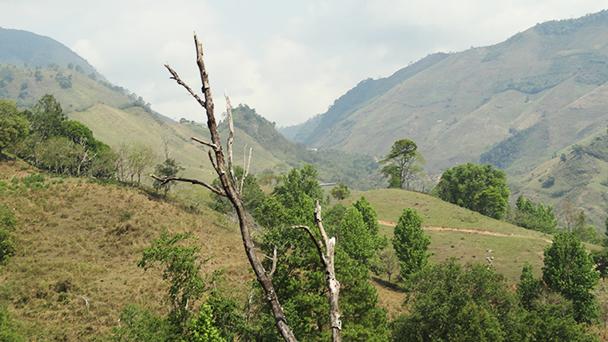Drug trafficking in Central America drives increased deforestation
This image shows deforestation in northern Honduras.
Research by the US Fish and Wildlife Service has found that laundered profits from the illegal drug trade contribute to deforestation along smuggling routes in Central America.
Steven Sesnie, an ecologist and the lead author of the research, says the drug economy is threatening some of the most remote, biodiverse forests in Central America — and the people who have lived there for thousands of years.
Drug profits are used, in many cases, to purchase land deep in the forest for cattle ranching. The beef can then be sold legally and the proceeds made to look like the result of a legitimate commercial enterprise. This has led to the destruction of about 1 million acres of Central American forest over the last decade, a process Sesnie calls “narco-deforestation.”
Related: Drug traffickers are wiping out the jaguar in Central America
Sesnie’s research covered all of Central America, but focused more intently on a few countries where researchers spotted higher rates of deforestation and larger patches of cleared forest. These areas, especially Honduras and Guatemala, corresponded with areas of high-volume cocaine trafficking. Sesnie’s team arrived at the 1 million acre figure by combining a newly released data set on global forest change with information from a counternarcotics database, which quantifies how much cocaine per year is being transported to certain countries and the volume of drugs seized, lost or delivered.
Most cocaine production occurs in Peru, Bolivia and Colombia, but 86 percent of the cocaine that arrives in the US is currently transported through Central America, which generates huge profits for local traffickers.
“That leaves a lot of money in these places, and this money is often invested in other illegal activities or illegal land markets,” Sesnie explains. “Eventually, [this] allows that money to be legitimized or transferred into the legal economy. That's the nexus of where the deforestation occurs. It's an agricultural driver, but underneath it is an effort to launder these illegal profits.”
The deforestation is occurring mainly in remote areas along the Caribbean coast of Central America, Sesnie says.
“These are really the last large expanses of lowland, highly diverse tropical forests that are also inhabited by indigenous groups who are primarily the stewards of these areas,” he explains. “They are fishermen, hunters and small-share farmers who have lived in these spaces for many thousands of years. Oftentimes, they engage in land clearing, but that has been traditionally a shifting cultivation, in which small areas are cleared and then left to rest. In tropical forest settings, things can recover quite quickly.”
Sesnie says the relationship between the indigenous communities and the traffickers is "interesting and not always a bad one.” Often, the traffickers provide sources of employment that weren't previously available and some have even been known to provide health benefits, he explains.
Money from illegal trafficking also gets invested in other ways, Sesnie says: ecotourism, hotels, African palm plantations, other forms of agriculture — even shade-grown coffee. But, while the traffickers “may be fulfilling an economic development role, that can also bring a great deal of violence,” he adds.
“Murder rates in these areas have risen sharply. [Drug trafficking] can bring a lot of social and health problems with it,” he says. “As these drugs flow through these remote areas, they're also consumed. So, it's really a double-edged sword. More often than not, there can be a great deal of harm and violence that also occur in these very remote spaces.”
This article is based on an interview that aired on PRI’s Living on Earth with Steve Curwood.
Our coverage reaches millions each week, but only a small fraction of listeners contribute to sustain our program. We still need 224 more people to donate $100 or $10/monthly to unlock our $67,000 match. Will you help us get there today?
